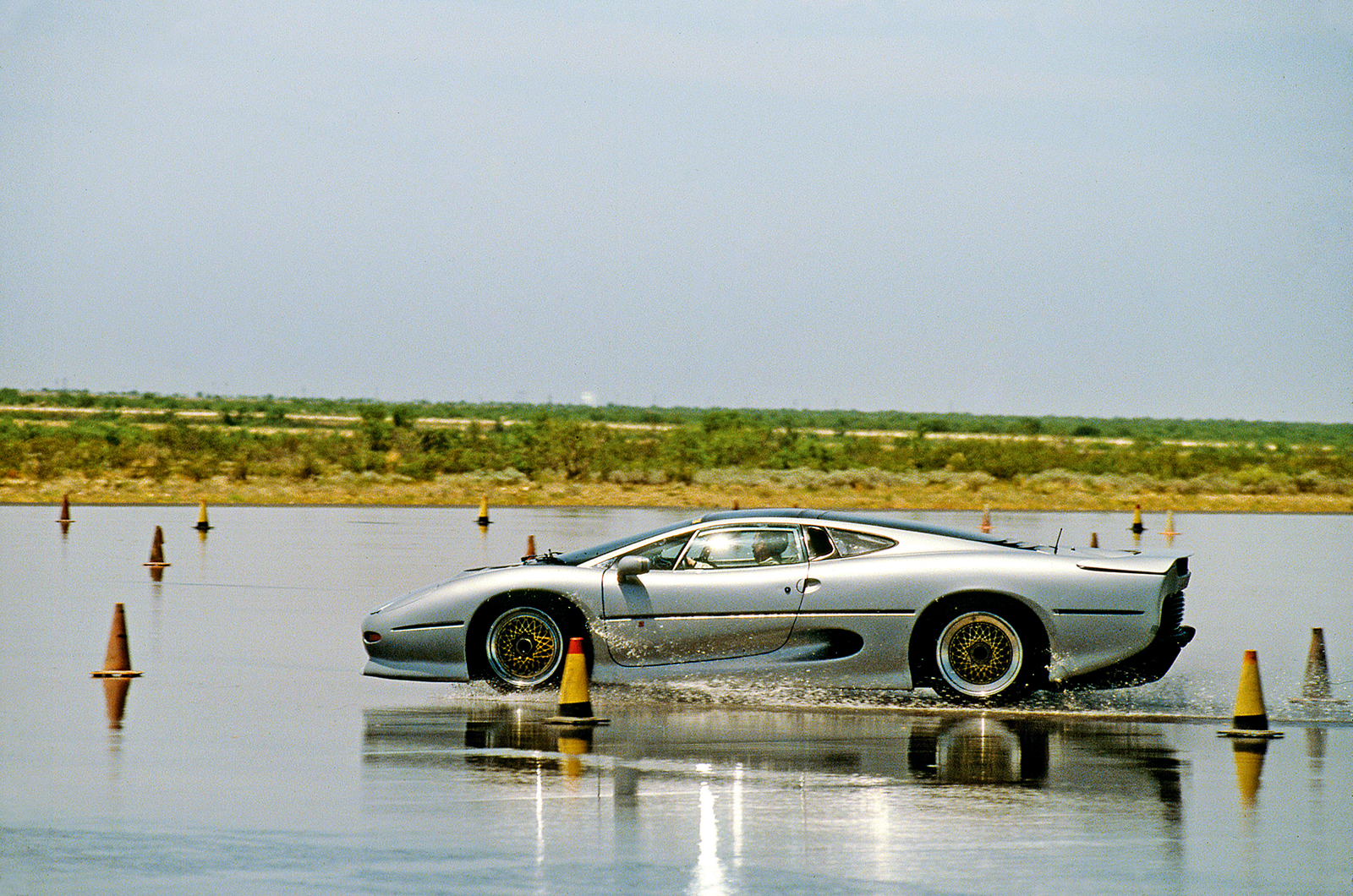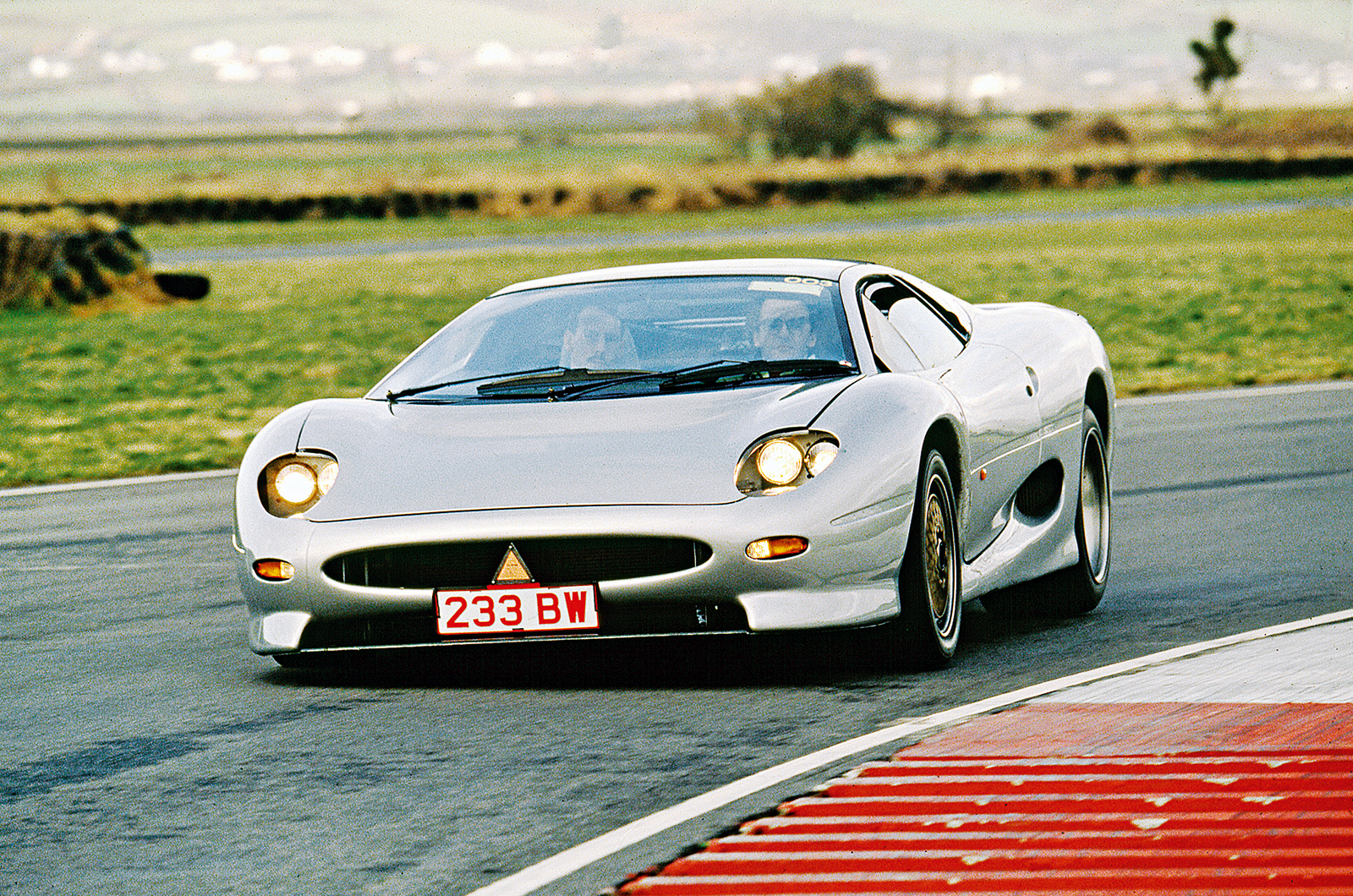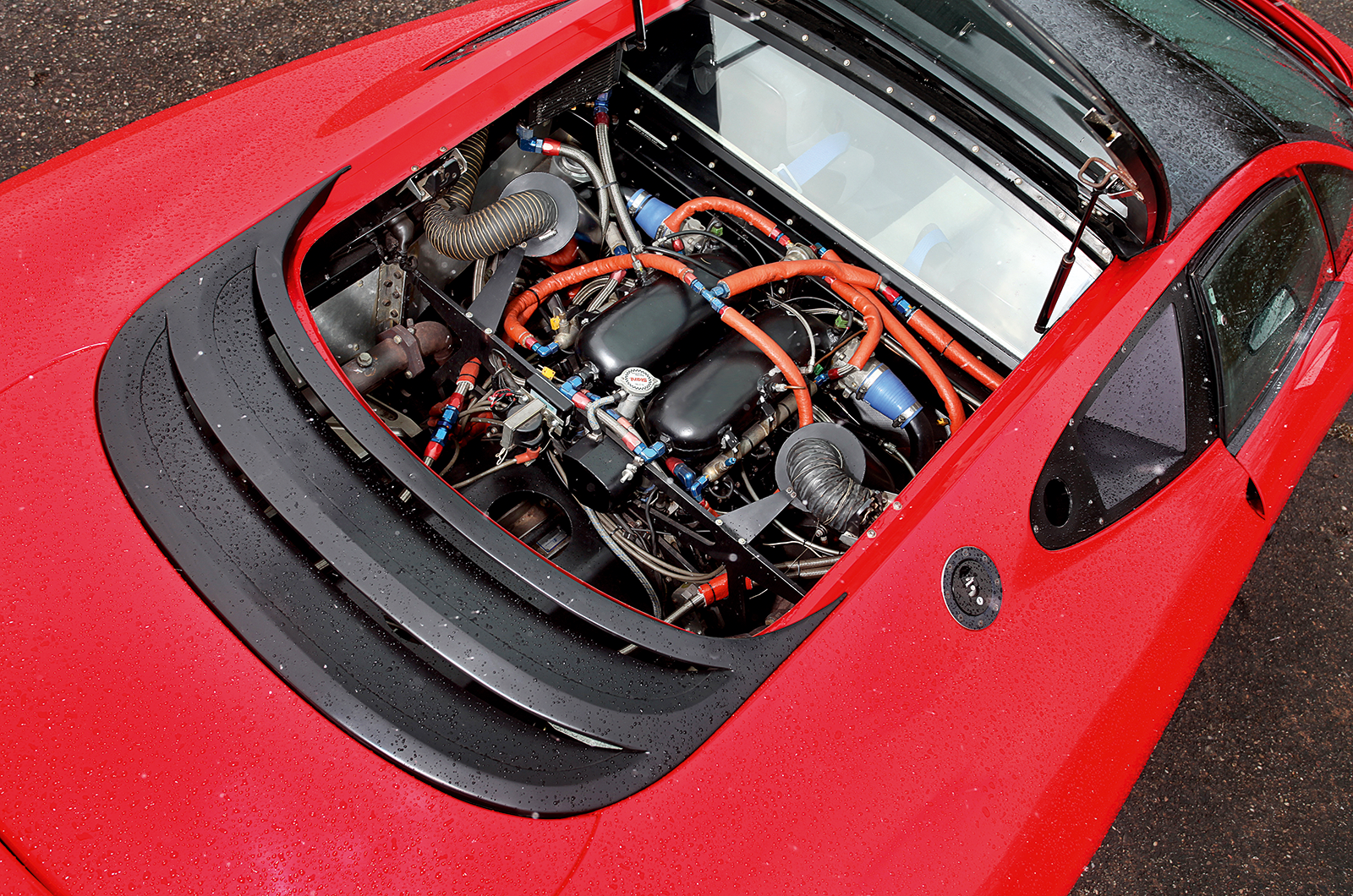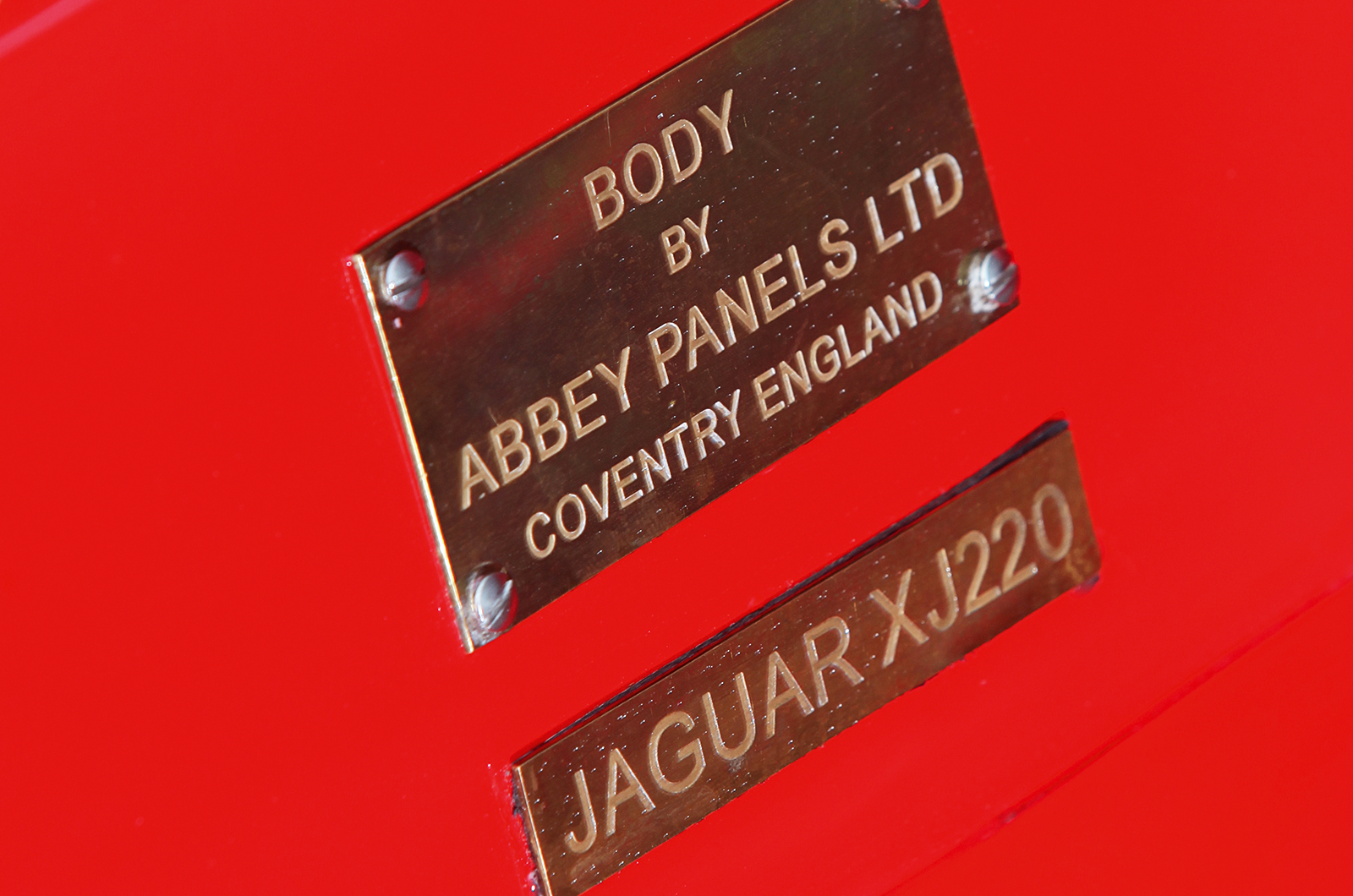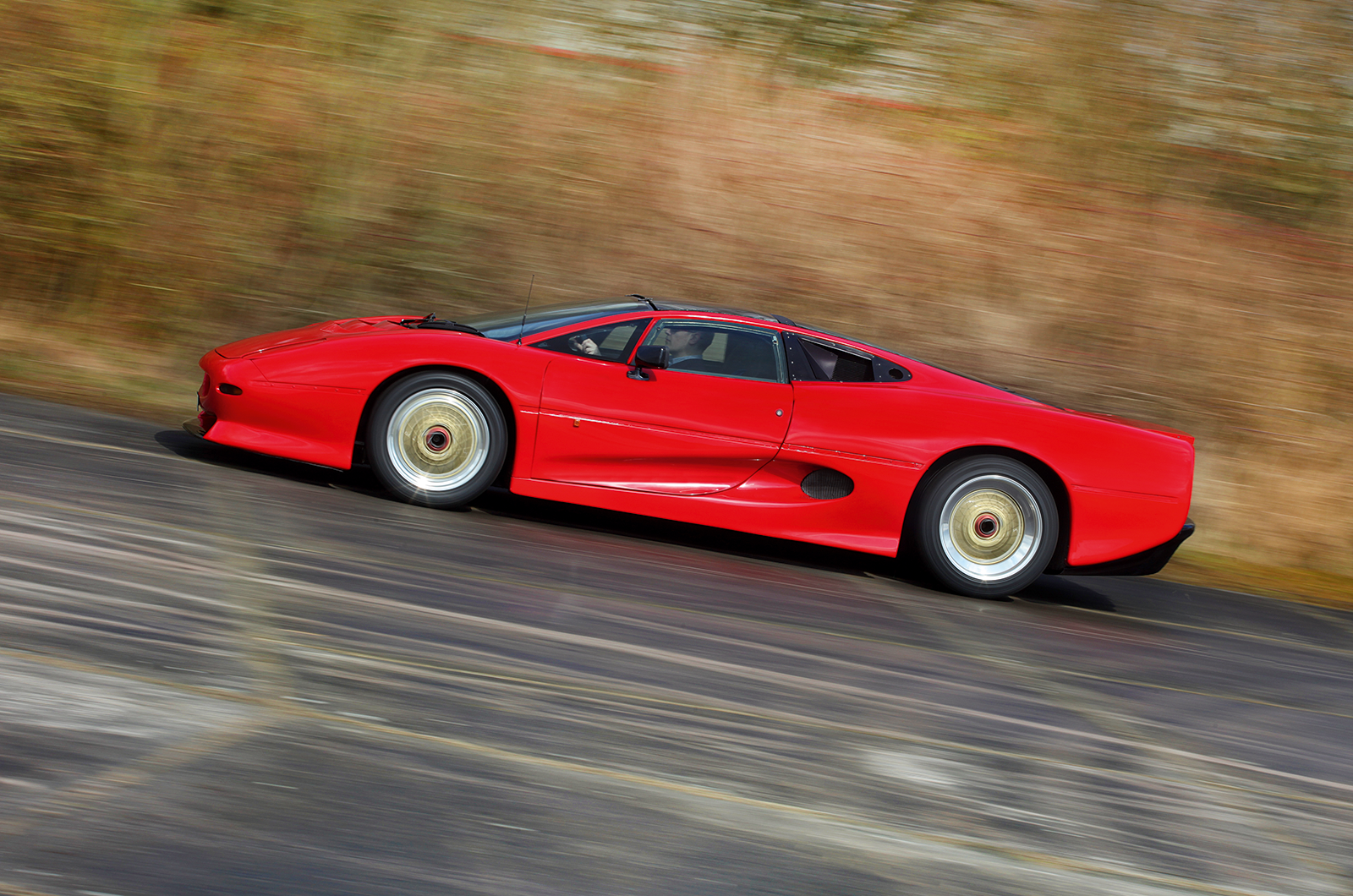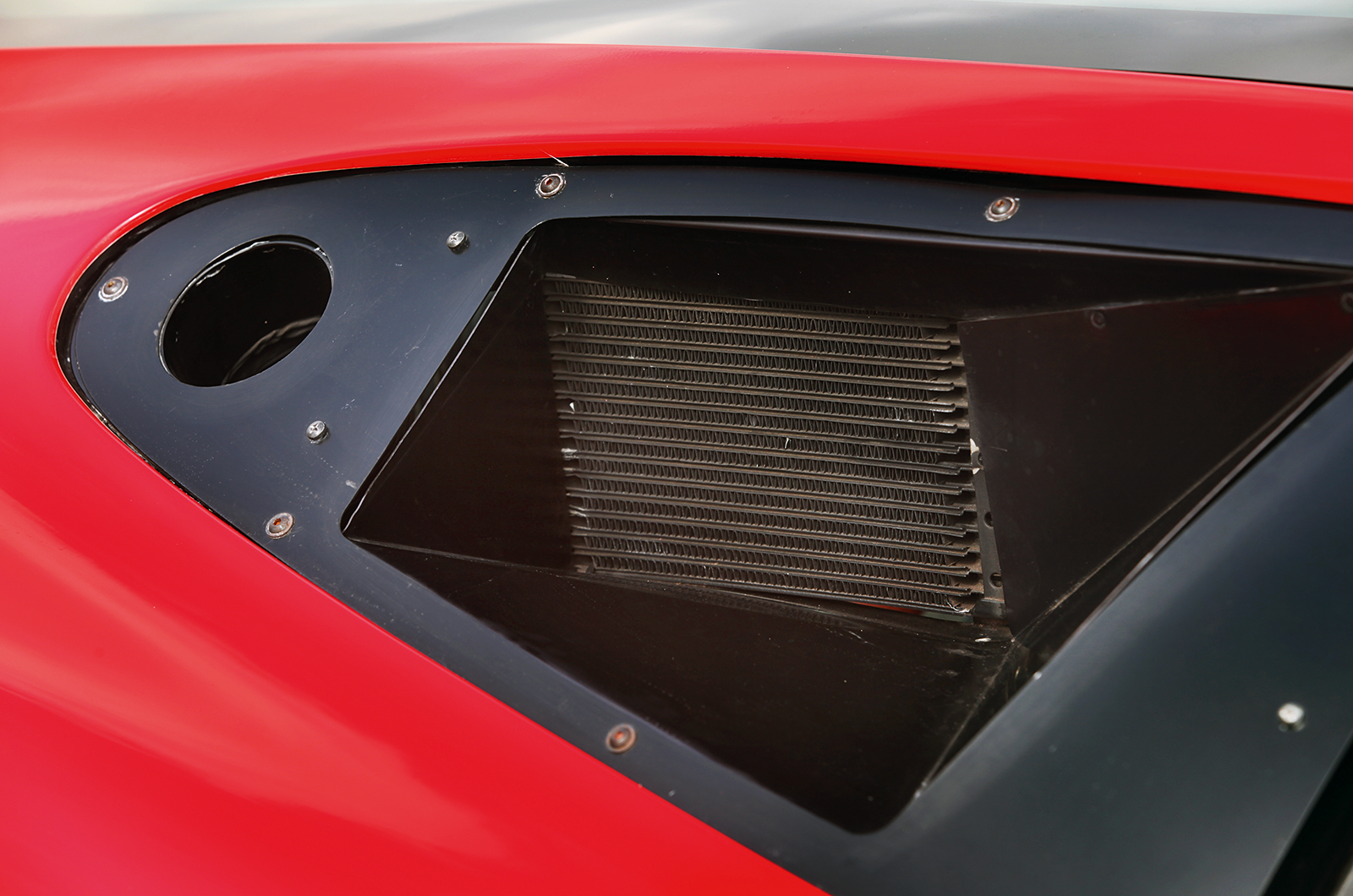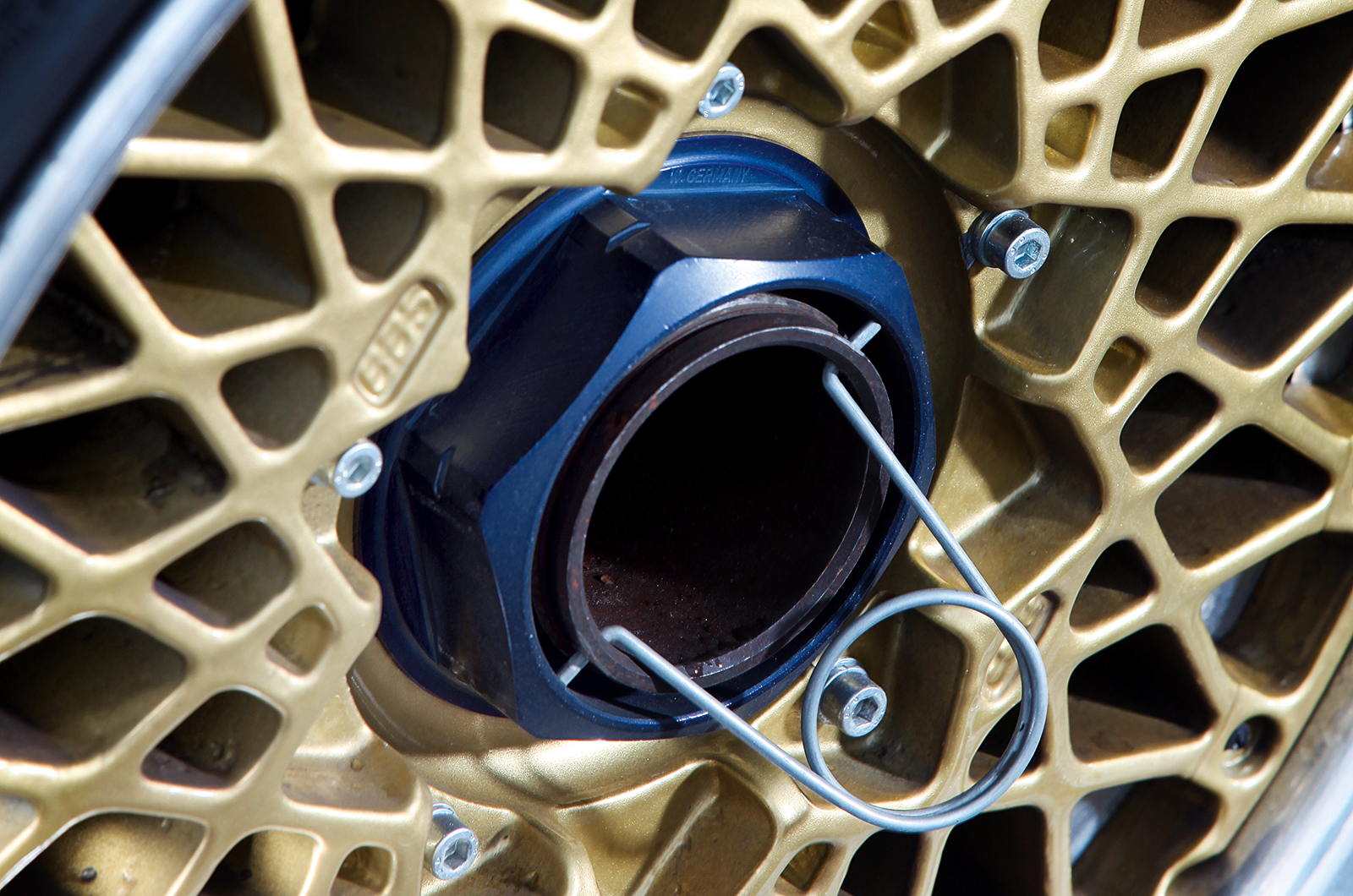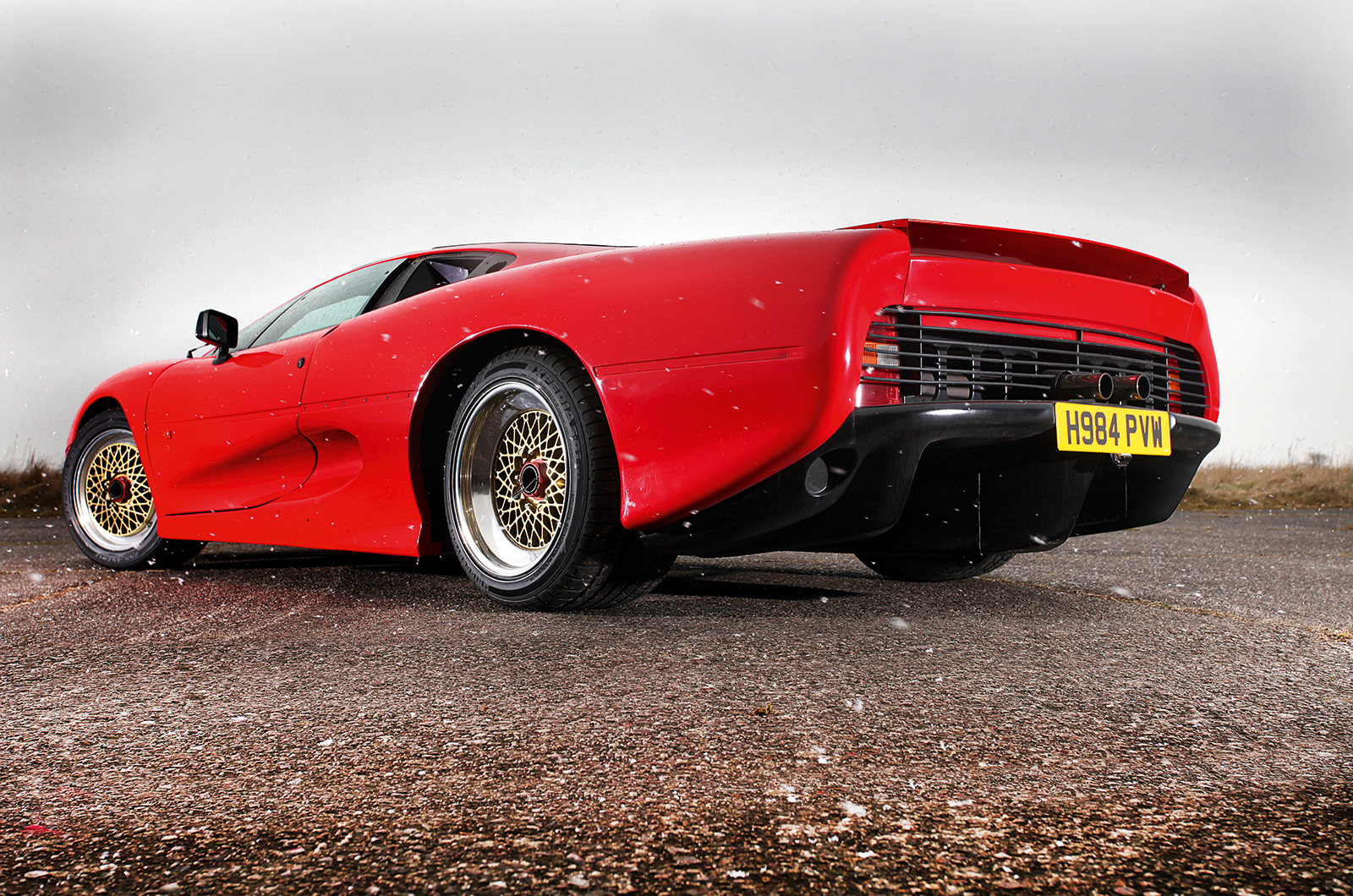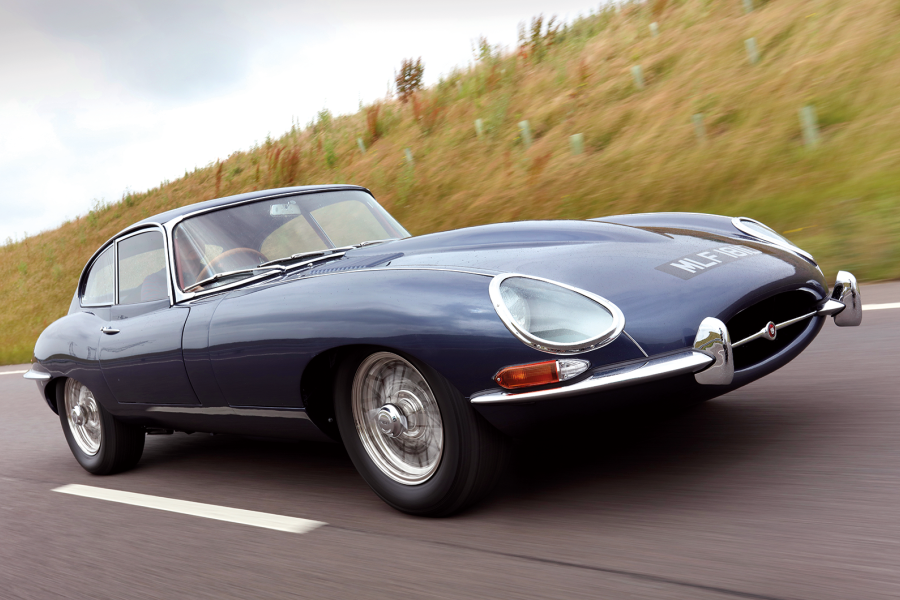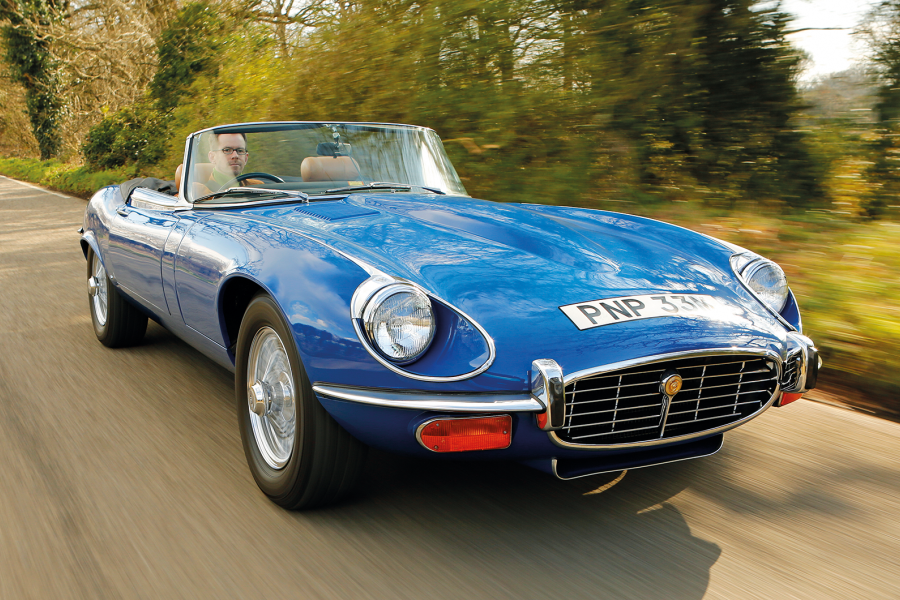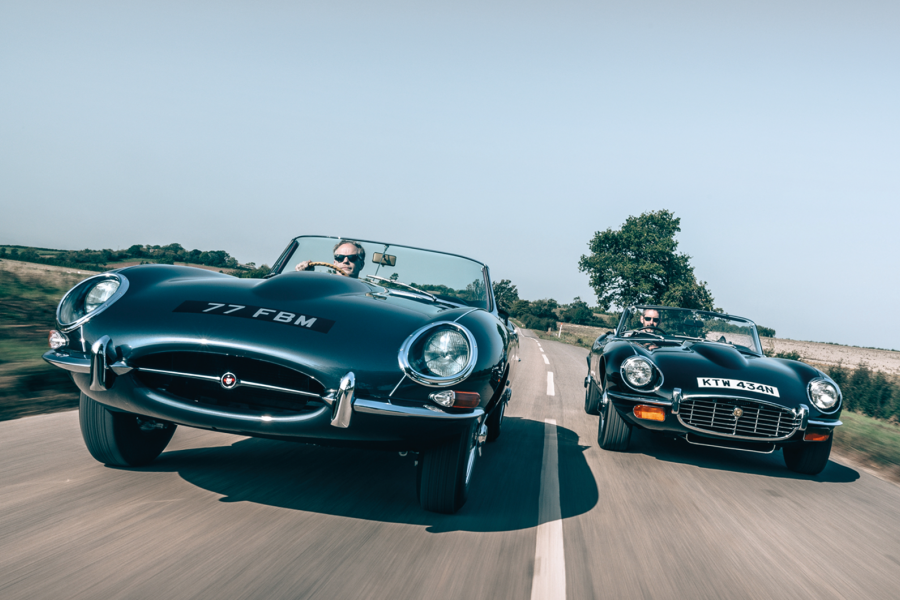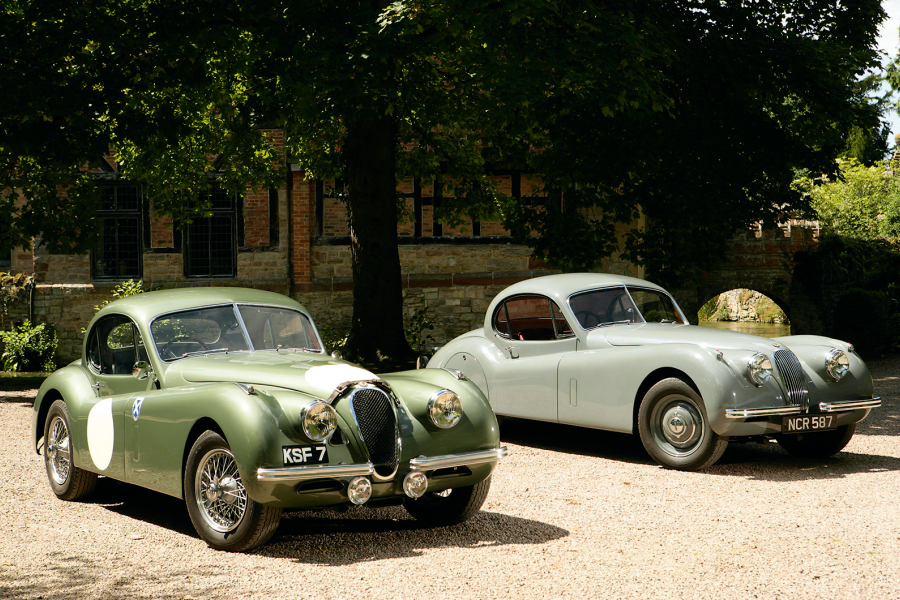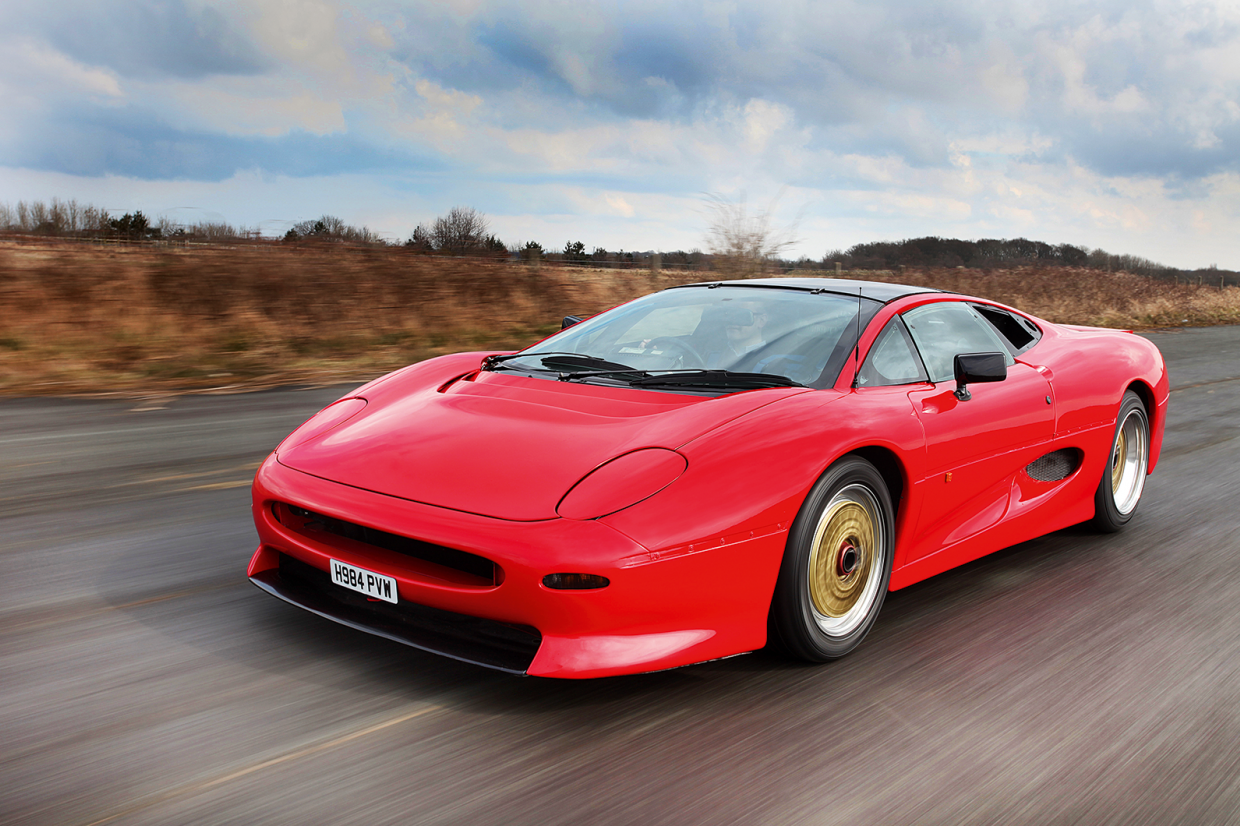
The surroundings appear familiar, it’s only the view that’s different.
Supercar cabins are much of a muchness, but Jaguar’s XJ220 is memorable for its near-perfect ergonomics, not least because you don’t need to contort to a neck-cricking angle to see out.
It’s also comfortable and well-equipped, packing every gauge, switch or thingamabob you can think of, and quite a few you can’t.
Except no other XJ220 we can recall came with a disclaimer writ large on the dash, the Dymo tape stating: ‘Any person who travels in the vehicle without authority does so at their own risk.’ That’s comforting.
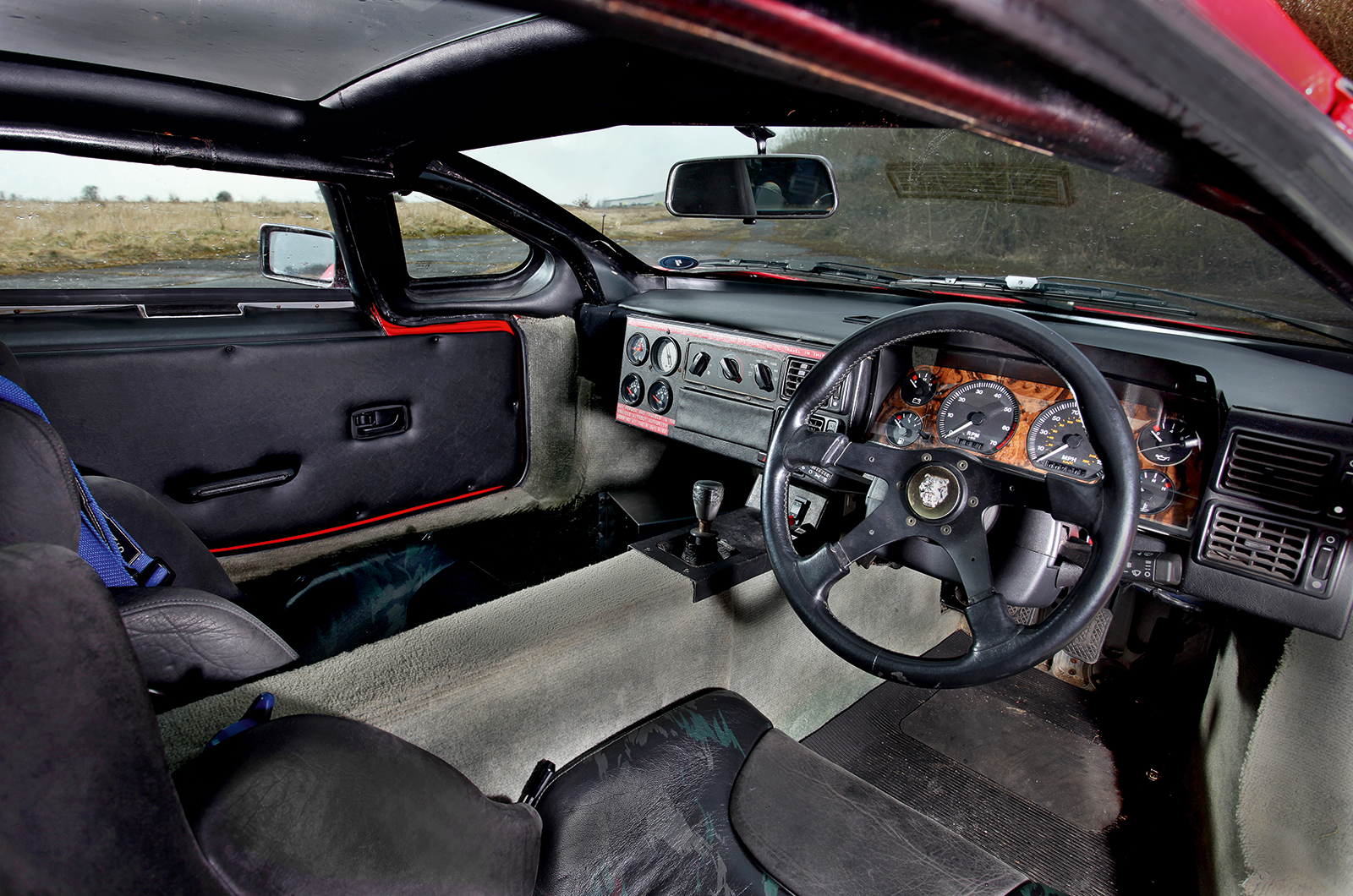
This prototype’s bitsa cabin lacks the polish of the later cars
And what’s with the BMW Z1 seats? Or the cut-down Jaguar XJ6 fascia, for that matter. And since when did XJ220s have quarterlights? Where’s the luxury?
Little about this car is quite how you remember, which could lead you to assume that it’s merely a homebrewed copycat. Close enough is good enough and all that.
But then you fire it up and the aural onslaught leaves you in no doubt that it’s the real thing – although, as with the rest of the car, branding is conspicuously absent from the engine’s cam covers.

